|
Introduction
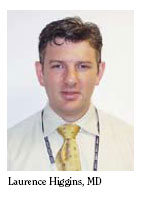 This past academic year has been marked by continued growth in the research, education, and patient care aspects of the Department of Orthopedic Surgery at the Brigham and Women’s Faulkner Hospital. Our double digit clinical growth is in large part been due to 4 new surgeons in our department. As it is difficult to separate the fiscal year, calendar year and date of publication of this report, I am not certain if any or all of our new surgeons have been introduced in this report. We were fortunate to recruit Dr. Laurence Higgins from Duke University. Dr. Higgins came to Boston as Chief of the Sports Medicine program in our department and the Brigham Chief of the Partners Shoulder Service. He has been very active in redefining the sports medicine program and has also worked closely with Dr. J.P. Warner at the MGH to enhance the clinical research and educational aspects of the shoulder service. They have an active combined fellowship, have frequent national and international visitors and lecturers, and have been academically very productive. As the Partners Shoulder Service and Partners Trauma Service are integrated between the Brigham and the MGH, they will be reported as separate sections of this publication. Dr. Higgins has also worked on a change in both the structure and curriculum of the sports medicine service. Dr. Tom Minas, head of the cartilage repair service, now divides his time between the arthroplasty group and the sports medicine group. The curriculum has also changed, but I will discuss this later in this review.
This past academic year has been marked by continued growth in the research, education, and patient care aspects of the Department of Orthopedic Surgery at the Brigham and Women’s Faulkner Hospital. Our double digit clinical growth is in large part been due to 4 new surgeons in our department. As it is difficult to separate the fiscal year, calendar year and date of publication of this report, I am not certain if any or all of our new surgeons have been introduced in this report. We were fortunate to recruit Dr. Laurence Higgins from Duke University. Dr. Higgins came to Boston as Chief of the Sports Medicine program in our department and the Brigham Chief of the Partners Shoulder Service. He has been very active in redefining the sports medicine program and has also worked closely with Dr. J.P. Warner at the MGH to enhance the clinical research and educational aspects of the shoulder service. They have an active combined fellowship, have frequent national and international visitors and lecturers, and have been academically very productive. As the Partners Shoulder Service and Partners Trauma Service are integrated between the Brigham and the MGH, they will be reported as separate sections of this publication. Dr. Higgins has also worked on a change in both the structure and curriculum of the sports medicine service. Dr. Tom Minas, head of the cartilage repair service, now divides his time between the arthroplasty group and the sports medicine group. The curriculum has also changed, but I will discuss this later in this review.
 Dr. Christopher Bono was recruited as BWH Chief, Orthopedic Spine Center in 2006. He did his orthopedic residency at New Jersey Medical School and a spine fellowship with Dr. Steven Garfin in San Diego. The Spine Center offers comprehensive services to evaluate and manage treatment for patients with back, neck and spine problems. Working collaboratively with physical therapists, pain specialists, surgeons, radiologists and other providers at Brigham and Women’s Hospital, the physicians of The Spine Center evaluate a wide range of problems. Patients who are coping with sprains and strains of the lower back, work-associated low back pain, sciatica, scoliosis, whiplash and other conditions can make an appointment at The Spine Center for evaluation and any necessary treatment. Orthopedic and neurosurgery services are readily available for innovative surgical solutions to difficult spine problems. Chris has been an outstanding addition to our group both clinically and academically.
Dr. Christopher Bono was recruited as BWH Chief, Orthopedic Spine Center in 2006. He did his orthopedic residency at New Jersey Medical School and a spine fellowship with Dr. Steven Garfin in San Diego. The Spine Center offers comprehensive services to evaluate and manage treatment for patients with back, neck and spine problems. Working collaboratively with physical therapists, pain specialists, surgeons, radiologists and other providers at Brigham and Women’s Hospital, the physicians of The Spine Center evaluate a wide range of problems. Patients who are coping with sprains and strains of the lower back, work-associated low back pain, sciatica, scoliosis, whiplash and other conditions can make an appointment at The Spine Center for evaluation and any necessary treatment. Orthopedic and neurosurgery services are readily available for innovative surgical solutions to difficult spine problems. Chris has been an outstanding addition to our group both clinically and academically.
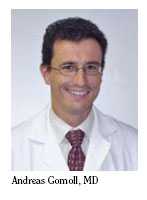 Dr. Andreas Gomoll finished the Harvard combined residency, completed a fellowship at Rush in Chicago and has rejoined our group working primarily with Dr. Minas in the cartilage repair center. Andreas brings a fresh vision to our sports medicine program and has been essential in redefining the integration of the watershed area between sports medicine and arthroplasty.
Dr. Andreas Gomoll finished the Harvard combined residency, completed a fellowship at Rush in Chicago and has rejoined our group working primarily with Dr. Minas in the cartilage repair center. Andreas brings a fresh vision to our sports medicine program and has been essential in redefining the integration of the watershed area between sports medicine and arthroplasty.
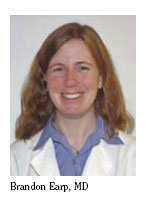
Dr. Brandon Earp took a brief sojourn for the birth of her second child but has returned to active practice in the BWH and HVMA hand program. She has also excelled in her role as a faculty supervisor for our PA program.
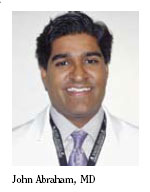
Dr. John Abraham joined Dr. John Ready in the musculoskeletal oncology group. This completed the sarcoma program, which includes first-rate general surgeons, oncologists, pathologists and an experienced support staff. The musculoskeletal oncology program in orthopedics has expanded greatly. It has been a challenge to our infrastructure as these cases must be done at the Brigham, are associated with a high patient acuity and they depend on OR and ICU space.
A major administrative change within the department has been the establishment of a Department of Orthopedic Surgery at the Faulkner Hospital. We now do nearly 2000 orthopedic cases there annually and it became clear that our continued growth required “feet on the ground” dealing with orthopedic issues at Faulkner. Working with the board of trustees, we developed a job description, went through a national search and chose Dr. Michael Wilson as the first chair. The program at Faulkner is integrated with the Department of Orthopedic Surgery at the Brigham and Women’s Hospital and it has been a true collaborative effort. We are about to open four new operating rooms at Faulkner and a substantial part of the growth will be in orthopedics. Our major focus will be in foot and ankle, sports medicine and hand/upper extremity.
The department administrative structure is headed by Mr.
Tom Gakis, and there have been some changes in other administrative
positions. Most of the departures have been due to
promotion and we have been very pleased with the new staff.
We continue to have a three-campus strategy at the Brigham
and Women’s, 850 Boylston Street and the Faulkner Hospital.
We, like many of your programs, feel the need to diversify from
the main campus and connect with the community.
The resident training program is alive and well at the BWH.
The expansion of the residency has required us to expand our
PA and fellow program. I will discuss each of these later in this
report. Finally, I am happy to report that Jenny D’Isola is still
my Executive Assistant. Jenny still wears her many hats and
is still the “go to” person in the department. I will try to highlight
each of the facets of our mission that includes patient care
research and education.
ADULT RECONSTRUCTIVE SERVICE/ JOINT REPLACEMENT
The joint replacement service has changed in response
to the changing pattern of joint arthroplasty. We maintain
a robust program in each of the aspects of hip and knee
replacement. In the hip we have surgeons doing metalon-
metal resurfacing, minimally invasive surgery, metal-onhighly-
cross-linked poly and we continue to be enthusiasts
of improved head-neck ratio, highly cross-linked polyethylene
and maintaining a minimal polyethylene thickness. Due to the
reported concerns of squeaking in ceramic and ceramic hip, we
have been less enthusiastic about adopting this technology to
date. While we remained committed to cruciate retention in
primary knee replacements, we do both cruciate retaining and
cruciate substituting knees. Our revision practice has grown
as our referral pattern widens. We run a particularly robust hip
revision service under the direction of Dr. Daniel Estok.
The broad range of technique in TJR has given our fellows
a very balanced experience. We have been fortunate to
have an outstanding group of fellows again this year. Dr. Tom
Moyad came to us from the University of Michigan and will be
going to San Diego to start his arthroplasty practice. Dr. Troy
Schmidt trained at Emory and will be going to the Charlotte
area for practice. Dr. Jeffrey Zarin is a graduate of the Harvard
Residency Program and will be going to Boston University to
establish a joint replacement practice. An integral part of our
arthroplasty service has been our international fellowship program,
and this year has been no exception. We have just had to
bid adieu to three outstanding six-month fellows. Dr. Darren
Patterson will be returning to his native Australia, Dr. Shi-Lu
Chia has been visiting from Singapore by way of England and
Dr. Christian Gauch has just returned to Germany. This has
been an outstanding program that has broadened our global
scope and we look forward to its continued growth.
Many of you know that Dr. Richard Scott has published a
book on Knee Arthroplaty. This has been highly succesful and
is a must-read for any TKR surgeon.
CARTILAGE REPAIR CENTER
Dr. Tom Minas established the Cartilage Repair Center
several years ago and it has grown from a program that initially
was based on the autologous chondrocyte implantation to one
that covers the gamut of cartilage repair by both cell based
therapy and marrow based techniques. He has developed a
robust joint registry, which is a goal mine for our residents,
students and fellows. In an era when osteotomy is decreasing
in the United States, Dr. Tom Minas is doing over a 100 osteotomies
a year. These include tibial, femoral, patellofemoral
and combined osteotomies often in association with some
other cartilage repair technique. While many of us tried for a
long period of time to bridge the gap between sports medicine
and arthroplasty, Dr. Minas has come closer to achieving this
goal. With redirection of the sports program to encompass
cartilage repair and with the combined effort of our sports team
including Dr. Larry Higgins, Dr. Scott Martin, Dr. Tom Minas,
Dr. Tamara Martin and Dr. Andreas Gomoll, the entire clinical
educational and research organization has been revamped.
The website, www.cartilagerepaircenter.org, continues to
be a primary site for both patients and surgeons.
FOOT AND ANKLE SERVICE
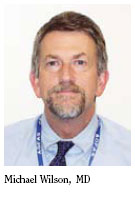 As Mike Wilson assumed his role
as Chairman of the Department of
Orthopedics at the Faulkner Hospital,
Dr. Chris Chiodo became the Chief of
the Foot and Ankle Division. The service
located at Faulkner Hospital has
been the focus of an outpatient effort
that we have done to improve flow,
efficiency and patient’s satisfaction.
This is a grant given by the Hatch
Foundation and run by the Institute
for Health Care Improvement (IHI). The year long work has
led to a marked improvement in patient’s satisfaction and
significant changes that are being implemented throughout
our outpatient service. The educational program for the foot
and ankle service has also been changed and integrated into
the residency core curriculum. Dr. Chiodo spent the past year
as President of the Massachusetts Orthopedic Association and
both Drs. Wilson and Chiodo have been active in the American
Academy and the Massachusetts Medical Society. Dr. James Ioli
heads up the podiatry division of the foot and ankle service.
The clinical program is located at various campuses and is an
integral part of our musculoskeletal care.
As Mike Wilson assumed his role
as Chairman of the Department of
Orthopedics at the Faulkner Hospital,
Dr. Chris Chiodo became the Chief of
the Foot and Ankle Division. The service
located at Faulkner Hospital has
been the focus of an outpatient effort
that we have done to improve flow,
efficiency and patient’s satisfaction.
This is a grant given by the Hatch
Foundation and run by the Institute
for Health Care Improvement (IHI). The year long work has
led to a marked improvement in patient’s satisfaction and
significant changes that are being implemented throughout
our outpatient service. The educational program for the foot
and ankle service has also been changed and integrated into
the residency core curriculum. Dr. Chiodo spent the past year
as President of the Massachusetts Orthopedic Association and
both Drs. Wilson and Chiodo have been active in the American
Academy and the Massachusetts Medical Society. Dr. James Ioli
heads up the podiatry division of the foot and ankle service.
The clinical program is located at various campuses and is an
integral part of our musculoskeletal care.
HAND AND UPPER EXTREMITY SERVICE
As the hand fellowship goes into its 26th year, the combined
program between the Brigham and Women’s Hospital
and Children’s Hospital has had another outstanding group of
fellows. The program has been further enriched over the past
several years with integration with our partners and colleagues
at the Massachusetts General Hospital. The three hand fellows
this year are Dr. Adam Marachi, Dr. Christina Kuo, and Dr.
Eon Shin. The fellowship has again matched in a highly competitive
fashion and the clinical program includes the Brigham and Women’s Hospital, the Veteran’s Administration Hospital,
Faulkner Hospital, and Harvard Vanguard Medical Associates.
ORTHOPEDIC ONCOLOGY SERVICE
Dr. John Abraham is just completing his first year in
practice and has certainly been a boost to the musculoskeletal
oncology program. The increased integration between the
Dana-Farber Cancer Institute and the Brigham and Women’s
Hospital has fostered this growth. The sarcoma service has
both national and international leaders in pathology, clinical
oncology, and musculoskeletal imaging. The association
between the general surgical and orthopedic oncological surgeons
has been seamless, integrative, and both clinically and
academically rewarding. It is anticipated that this service will
be a major growth area in our department.
SPINE SURGERY SERVICE
Dr. Chris Bono is finishing his first year as Chief of the
Orthopedic Spine Service. The two major areas of growth
have been the appointment of Dr. Arthur Day as Chief of
Neurosurgery at the Brigham and Women’s Hospital. Dr. Day
is a nationally and internationally recognized neurosurgeon
and we are working together to integrate the orthopedic and
neurosurgical spine programs. We have also started a center
funded by the Osher Foundation. This is the Osher Center for
Complementary Therapy which is run by Dr. David Eisenberg.
Dr. Eisenberg has published extensively on the use of complementary
therapy in the treatment of back and spinal disorders.
With the epidemiological strength of the Osher Center, it is
possible to critically assess the value of a variety of complementary
therapies in the treatment of back and spine disorders.
The various components of the spine program have integrated
into the Brigham Spine Center which has the ability to provide
a seamless transition from nonoperative to operative spine
treatment. Moreover, we have increased our exposure through
physical medicine and rehabilitation in both the diagnostic
and therapeutic aspects of the treatment of back and spine
problem. This program is run by Dr. Zacharia Isaac and Dr.
Jennifer Baima.
SPORTS MEDICINE PROGRAM
As mentioned earlier, the recruitment of Dr. Andreas
Gomoll and the addition of the cartilage repair service to the
sports medicine program has changed the face of this division.
Moreover, the development of four new operating rooms at the
Faulkner will provide a modern effective and efficient center
for our sports medicine effort. In addition to this program, the
Fish Center for Women’s Health located at our 850 campus has
a sports medicine program geared towards female high school
and college athletes. It is run by Dr. Tammy Martin and Jennifer
Baima.
Our most recent resident evaluation of the sports medicine
program, experience of the PGY-5 residents, has been
outstanding and is positive reflection of the changes made by
the service.
With the large database of the cartilage repair center and
the shoulder service, there is a great deal of opportunity to produce
excellent prospective studies determining the outcome of
our sports medicine procedure.
ORTHOPEDIC RESEARCH
The orthopedic research department is one of the core
facilities of the Brigham Research Institute. This group has
played an active role in the development of the website and
is planning a retreat for the fall of 2007. I have asked each of
the investigators to provide a report of their current activities.
While the list is not complete, I will highlight several of the
individual reports.
As part of a BRI informational report, Professor Julie
Glowacki summarized the Orthopedic Program as follows:
The Orthopedic Research Laboratories bring together
orthopedic surgeons and researchers to develop tomorrow’s
treatment options for patients with orthopedic problems. The
approach is to translate new findings from basic and clinical
investigations into a platform for skeletal health and orthopedic
care. Emphasis is on chronic and acute orthopedic and joint
diseases such as osteoarthritis, rheumatoid arthritis, problem
fractures, sports injuries, bone cancers and metastases, spine
diseases, osteoporosis, and skeletal aging.
Clinical investigations on disease risk factors and optimizing
outcomes continue to provide evidence-based rationales for care
improvement. New knowledge on mechanisms of disease translates
into innovative approaches to prevention and treatment.
Collaborations on cutting-edge diagnostic imaging techniques
focus on early detection of musculoskeletal disease and
monitoring of interventions.
Research on Tissue Engineering of cartilage, bone, intervertebral
discs, knee menisci, and joints holds promise for
innovative treatments for a variety of bone and joint problems.
Advances are being made with cell-based, cell-free, and gene
therapies.
Advanced polymer compositions can provide scaffolds for
implantation of genetically modified cells and tissue replacements,
release drugs targeted to specific sites, and securely
anchor orthopedic implants. Research with innovative biomimetic
materials is designed to tap into and augment the
patient’s regenerative potential.
Nanotechnology research highlights new bone cements
that are stronger and more enduring for use to anchor orthopaedic
implants, stabilize spinal fractures, and reconstruct
skeletal defects left after trauma or tumor resections.
New optical technologies are being developed and applied
for early detection of arthritis, for testing new therapeutics, and
for nerve and vessel repair.
- Investigative Groups
- Cartilage Repair Center
- Center for Molecular Orthopedics
- Optical Coherence Tomography Laboratory
- Orthopedic Nanotechnology Group
- Skeletal Biology Research Laboratory
The major addition to our research effort has been the
addition of Dr. Jeffrey Katz and Dr. Elena Losina to our department.
Jeff and Elena are nationally recognized for their work
on outcomes analysis and they bring their group and are
collaborating with our clinical staff in multiple projects. We
started a unit called PRIDE which gives department sponsored
seed grants for pilot studies which will lead to larger funding
opportunities in multiple areas. Moreover, Jeff and Elena have
been very successful in obtaining grants in this difficult funding
environment. Since the last publication of this journal, the
Department of Orthopedic Surgery at BWH has launched a bold
clinical research initiative, the Orthopaedic and Arthritis Center
for Outcomes Research (OrACORe). The Center builds on a
long-standing, productive research program in orthopaedic and
musculoskeletal disorders. Elizabeth Wright, PhD, Director of
Data Management in the Center rounds out the Center faculty.
Each of these three investigators is a faculty member in the
Department of Orthopaedic Surgery; Dr. Katz is also appointed
in Medicine, in the Division of Rheumatology, Immunology
and Allergy.
Among the many projects led by the Center’s investigators,
Dr. Losina is Principal Investigator of a five year NIH funded
study to develop an osteoarthritis policy model. The model
uses computer simulation techniques to examine the costs and
outcomes of a range of preventive and therapeutic interventions
for osteoarthritis, the most frequent source of disability
in the elderly. Dr. Katz is Principal Investigator of another five
year NIH funded study to examine the risk factors for long
term failure of total hip replacement in the national Medicare
population.
In collaboration with Dr. Thornhill and Thomas Gakis, the
Center has developed a research initiative designed to foster
research conducted by Department faculty. The Program in
Research Incubation and Development (PRIDE) was rolled out
in the Spring of 2007 and already several PRIDE-supported
projects are underway, led by Department faculty and conducted
in collaboration with the OrACORe investigators and
research staff.
NANOTECHNOLOGY/POLYMER SCIENCE
Dr Anuj Bellare reports: This year, our research has led
to the development of three new ultra-high molecular weight
polyethylene (UHMWPE) processing technologies that focus
on providing oxidation and wear resistant UHMWPE while
preserving mechanical properties that are known to decrease
in the first generation radiation crosslinked UHMWPE. High
mechanical properties, such as fracture toughness, fatigue
strength and ultimate tensile strength are all especially important
for application in total knee replacement prostheses. One
of the technologies is based on the incorporation of Vitamin E
antioxidant into UHMWPE, which provides oxidation resistance
by scavenging trapped free radicals and thereby obviates the
need to thermally treat irradiated UHMWPE, which is known to
decrease its mechanical properties. Each of the new technologies
have potential for application in both knee as well as hip
components.
Ongoing research also includes a study to increase the
mechanical properties of a new nanocomposite bone cement.
Previous research had focused on using radiopacifier nanoparticles
to increase fatigue life of bone cement. A new approach
is to fabricate nanoparticles of antibiotics to increase the
mechanical properties of bone cement, and also to enable larger
quantities of antibiotics to elute into peri-prosthetic tissue and
at a higher rate. We are currently exploring the use of biocompatible
surfactants to prepare nanoparticles of gentamicin
and tobramycin. In addition, we are also investigating a new
solvent-antisolvent approach involving water as a solvent and
supercritical carbondioxide antisolvent to precipitate microand
nano-sized powders of antibiotics with controlled particle
size. Optimum particle size of antibiotics will be eventually
incorporated into bone cement and evaluated for delivery into
peri-prosthetic tissue to treat infections.
SKELETAL BIOLOGY RESEARCH LAB (SBRL)
A report from the SBRL: Current basic work focuses on
effects of aging on human marrow-derived progenitors of osteoblasts,
chondroblasts, adipocytes, and osteoclasts. Intrinsic and
extrinsic effects of aging are being revealed with emphasis on
hormonal and other approaches to prevention or “rejuvenation”.
These programs are supported by two NIH grants.
Translational projects include impact of vitamin D-deficiency
on orthopedic and other disorders. This team has consistently
found extreme vitamin D deficiency in 80% of patients
with fragility fractures. In addition, vitamin D-deficiency is
found in 40% of patients who are admitted for hip arthroplasty
for osteoarthritis. Stimulation of osteoblastogenesis by active
metabolites of vitamin D is impaired in marrow-derived cells
from elders. Progress is being made in enhancing responsiveness
in order to maximize bone formation.
Clinical projects include a multidisciplinary team approach
for innovative fracture care pathways. Because of the high
prevalence of vitamin D deficiency in fracture patients, management
of vitamin D status is a key element that can begin
upon Other clinical projects concerns the natural history of
osteoporosis in patients with osteoarthritis. Having reported
that 25% of a cohort of women with advanced osteoarthritis
also had osteoporosis diagnosed by bone density measurement,
the team identified simple radiographic parameters and clinical
risk factors, namely leanness and advanced age, that should
prompt a referral of specific osteoarthritic patients for osteoporosis
evaluation.
A new collaboration with Dr. Higgins concerns the underlying
pathophysiology of rotator cuff arthropathy.
For a collaboration with Dr. Siegel at Mc Lean Hospital,
Dr. Glowacki identified the pivotal role of muscle-derived
Interleukin-6 in exercise-induced hyponatremia in stricken
Marathoners, including two recent fatalities.
Ongoing work on skeletal tissue engineering involves cellfree
and cell-based approaches to regenerate articular cartilage,
bone, menisci, and whole joints. With Drs. Mizuno and others,
there are 4 platform technologies that support efforts for innovative
approaches to skeletal repair and reconstruction. First, a 3-dimensional osteoinductive device changes normal human
skin fibroblasts or marrow-derived “stem” cells into chondrocytes
or osteoblasts and enables analysis of molecular mechanisms
of post-natal chondrogenesis and osteogenesis. Second,
porous 3D collagen sponges support in vitro histogenesis by
many cell types, including marrow, meniscus, chondrocytes,
and osteoblasts. Third, a medium perfusion system optimizes
histogenesis of many tissues in 3D culture. Fourth, a novel
pressure apparatus further enhances histogenesis of cartilage
and bone. With these tools, it was shown that culture conditions,
including specific growth factors, nutriceuticals, oxygen
concentration, and mechanical pressure can be optimized
for generating each tissue type and for studying fundamental
mechanisms of histogenesis.
In the past year, Professor Glowacki’s local activities
included chairing the Harvard Orthopedic Surgery Research
Committee, being Co-chair of the BWH Musculoskeletal
Research Center, and serving as a BWH Professional Standards
Officer for Research Staff. She has continued her service on
the NIH review panel for Musculoskeletal Tissue Engineering,
advises NASA and the FDA, and chairs the Ethics Advisory
Committee of the American Society for Bone and Mineral
Research.
CENTER FOR MOLECULAR ORTHOPAEDICS
Dr Chris Evans reports: An additional RO1 was funded
by NIAMS to support research into the use of novel biological
approaches to healing the ACL. This is a collaborative project
with Martha Murray, Children’s Hospital. Ryan Porter, PhD,
received a F32 award from NIH. This provides him with salary
and some discretionary money to support his post-doctoral
research into novel, biological approaches to cartilage repair.
These awards are very difficult to get. Total funding now
includes 3 RO1 grants, an STTR grant, Foundation money and
some industry support – direct costs in excess of $1 million and
indirect costs of several hundred thousand dollars per annum.
Continued stream of research papers in journals such as
JBJS, Gene Therapy, Molecular Therapy, JOR, Arthritis and
Rheumatism, Arthritis Research and Therapy etc.
Continued focus on developing a Phase I clinical trial in
the gene therapy of osteoarthritis and pre-clinical development
of novel approaches to the repair and regeneration of bone,
cartilage and other tissues of orthopaedic interest. Because
these are translational projects, we value and seek serious clinical collaborators. Research into bone healing has been
greatly expedited during the past year by an increasingly close
relationship with members of the trauma service, particularly
Mark Vrahas and Mitch Harris. This has led to much better
conceptual bridging of the transition from laboratory research
to possible clinical application and increased funding. These
two busy clinicians are much appreciated for their willingness
to set aside time for serious research discussions.
We are hoping to start a new line of research into the
immunotherapy of orthopaedic tumors. A new post-doctoral
fellow, James Wells, PhD, has joined the lab. to spearhead this
effort. He has got off to a good start, winning a 2007 BRI
Research Excellence Award from BWH.
TISSUE ENGINEERING LAB
Dr Myron Spector reports the following: We are continuing
our research and development of collagen devices
for musculoskeletal and neural tissue engineering. We have
demonstrated that the collagen devices can serve as delivery
vehicles for plasmid DNA for non-viral gene transfection. We
also recently demonstrated the presence of a cartilage-lubricating
protein (lubricin/superficial zone protein) in osteoarthritic
cartilage, indicating that chondrocytes in OA tissue have the
capability to produce cartilage surfaces that have normal lubricating
qualities.
AWARDS/HONORS
Dr. Spector was inducted into the American Institute for
Medical and Biological Engineering as a Fellow. Dr. Spector
was named one the three editors-in-chief of a new journal
Biomedical Materials: Materials for Tissue Engineering and
Regenerative Medicine, published by the prestigious Institute
of Physics of the United Kingdom.
SUMMARY
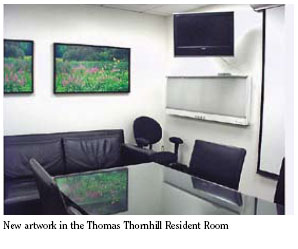
I have tried to give you a brief update on the various activities
within the Department. We were pleased to have moved
from 17th to 11th in the recent US News and World Reports
ranking of Orthopedic Departments. In so much as we have no
Pediatric Orthopedics which factors into the rankings, this is
a good sign of our growth and diversity of program. The only
certainty is that I have omitted individual contributions and
perhaps even whole programs, and for this I apologize. I look
forward to seeing you in the coming year. Go Red Sox!
|